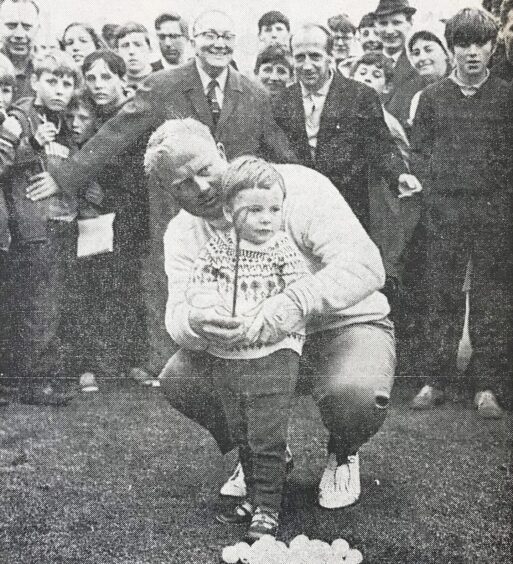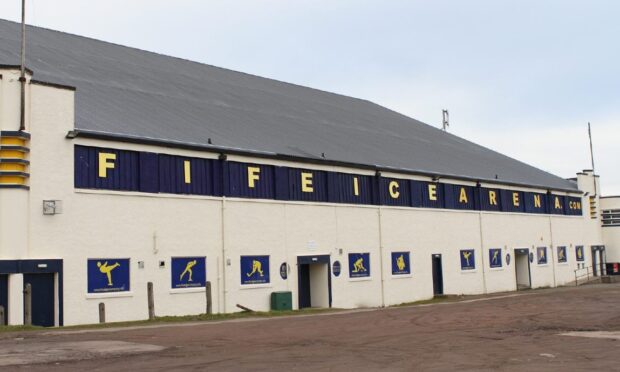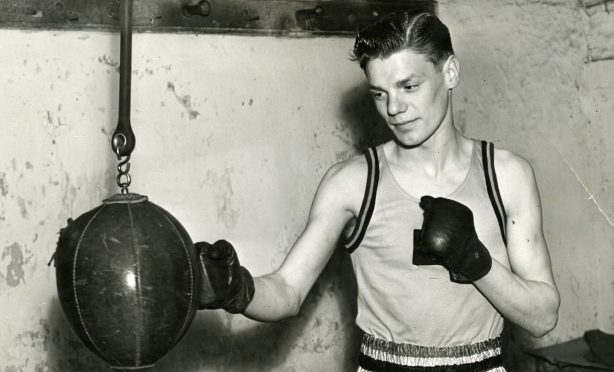
Golf has been played at Caird Park for over 100 years by everyone from humble hackers and serious club players to pros like Jack Nicklaus.
Playing the Cairdie was a rite of passage for many golfers.
Generations of youngsters learned the game for less than a quid on the nine-holer.
The course rose from humble beginnings.
Caird Park Golf Club was formed in 1926
Caird Park opened in 1920 as a gift to the city from Sir James Caird.
The “Dundee Links” followed in 1923.
This was the city’s first public golf course.
There was a 5,477-yard 18-hole course and 1,485-yard nine-holer.
Parks superintendent Alexander Macrae laid out the course, which took full advantage of the natural surroundings including the Gelly Burn and quarry.
Caird Park Golf Club was formed three years later.
On March 29 1926, in the tea room by the castle, 29 men, ranging from a church minister to Dundee millworkers, gathered to discuss its formation.
The majority of those who attended came by tramcar to Maryfield Terminus in Forfar Road before walking through the Caird Park football pitches.
Present at the meeting was the then first professional of the course, Tom Hay, who had the idea of founding the Caird Park Golf Club.
Mr Hay was appointed first captain after they discussed a huge set of club rules.
The annual charge was fixed at the “princely subscription” of five shillings.
There was a huge demand to join.
Officials imposed a limit of 50 members.
The tea room was also the clubhouse during its fledgling years.
There was only one bus route that went nearby – the northern circular.
For the benefit of golfers, a special bus was routed there on Wednesday and Saturday afternoons, but demand can’t have been great enough.
It only lasted 10 days.
How much was a round of golf in 1932?
The membership limit rose gradually.
The club had expanded to such an extent that the locker rooms behind the 18th green were bought from the parks department in 1929.
Beginners shared the course with advanced golfers at Caird Park.
A round of golf cost 9p per head in 1932.
Not everyone was impressed.
One letter writer to the Evening Telegraph said being cheap enough for the “occasional golfer” had turned the course into “a dumping ground for beginners”.
“Year after year we hear complaints about shocking hold-ups and bad golfing etiquette,” he wrote.
“This arises mainly through the large proportion of ‘first offenders’ on the course.
“How can the powers that be expect to popularise the course under these circumstances?
“It is high time that the season ticket question should be looked into again so that the course and its patrons may get fair play.”
The course was commandeered for sheep grazing to aid the war effort in 1940.
Play continued.
The course showed a deficit in the post-war years.
It was good news for the sheep.
The revenue from grazing was needed to balance the books.
Although the sheep droppings presented a significant hazard.
So did the flock.
Caird Park golfers wanted rid of the sheep
One letter writer to the Evening Telegraph said the sheep caused “quite a lot of controversy” during a professional tournament in August 1951.
He said: “The opinion of the visiting experts was that the sheep were ruining the course, and the greens in particular.
“This has been the opinion of local players for long time.
“Lord Provost Fenton said the revenue was needed help reduce the deficit that the course showed last year.
“Is this the only way the extra money can be found?”
The letter writer suggested a price increase and stated the people who used the course “would be only too pleased to pay a bit extra to be rid of the sheep”.
Over 70,000 games a year were being played at Caird Park.
The city needed a second public course.
Walter Lyle, the Caird Park professional, did most of the original planning for Camperdown Golf Course, which opened in June 1959.
Lyle was the uncle of 1985 Open champion Sandy.
An annual match began after Camperdown Golf Club was formed in 1961.
On that occasion, the visiting Caird Park side were, perhaps understandably, runaway victors by a 19-1 margin over the fledgling Camperdown golfers.
They would compete every year for possession of The Sporting Post Trophy.
And for the want of a birdie in the final hole at Muirfield in 1959, Caird Park might have had a past Open champion as pro in the sixties.
Fred Bullock, who was appointed professional in 1961, finished equal second, having required a three on the 72nd hole to pip Gary Player for the Claret Jug.
Jack Nicklaus left bear prints in the grass
Jack Nicklaus remains golf’s greatest player with the most Majors, and the Golden Bear arrived to strike some balls at Caird Park before the 1968 Open at Carnoustie.
Nicklaus was staying in Dundee at the NCR guest house on Perth Road.
He also gave a golf clinic to NCR workers during his visit.
Nicklaus went on to finish second behind Gary Player at Carnoustie.
Sound familiar?
Bernard Gallacher and Ronnie Shade played Caird Park in May 1975.
The matchplay contest was billed as “the round of the century“.
They played one hole on 18 courses in these parts during the marathon 12-hour round which included a journey of 100 miles and five helicopter trips.
It was staged for charity.
Gallacher and Shade landed by Royal Marine helicopter at Caird Park.
Ryder Cup hero Gallacher won the match by four shots.
These were heady days at the course.
A huge function lounge was added to the clubhouse building in 1976.
A second nine-holer followed in the 1980s.
Both were given different colours – red and yellow.
No booking or membership was required and access was easy.
The hole that stood out from the yellow was the 8th which was a Par 4 with a right to left slope and a green that could rival the 5th at Augusta for difficulty.
The Par 3 18th over a body of rough was a perfect finish.
Caird Park golf course will close in 2025
Caird Park was recorded as being the busiest public course in Europe in the 1980s.
In 1986 there were 417 members.
The annual membership charge was £25.
Jackie Black was the golf professional in the 1980s and 1990s.
The former Stobswell Secondary pupil taught pupils and ran the golf shop.
The mid-90s brought changes.
The red course was closed in April 1996 and amalgamated with the yellow to leave a single nine-holer because of budget constraints.
Players became frustrated waiting to tee-off from the single course.
The scourge of vandalism was another hurdle they fought to overcome.
The success of Tiger Woods marked a rise in the number of people playing golf but more public courses were closing at the start of the century in Scotland.
The clock was ticking.
The natural death cycle saw the closure of Camperdown in 2020.
Caird Park with its 105 members remained in divot-free peace but is now facing the same fate, after councillors voted to close the course by April 2025.
It may be game over for the Caird Park Golf Course but this Dundee institution will sign its scorecard after helping countless players fall in love with the game.



















Conversation